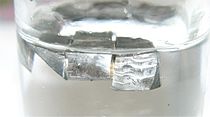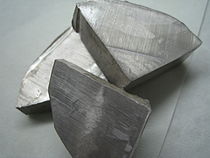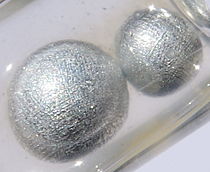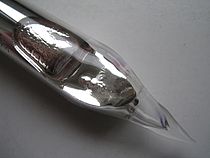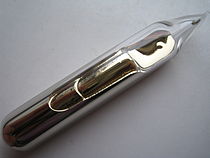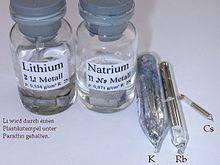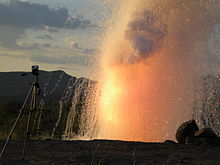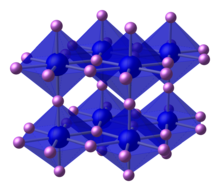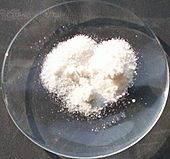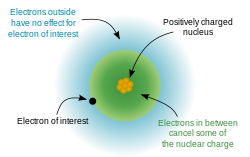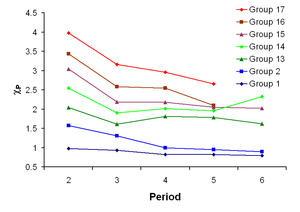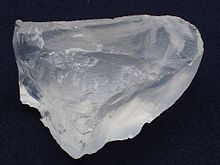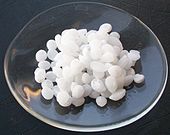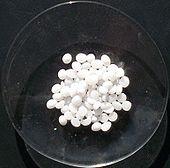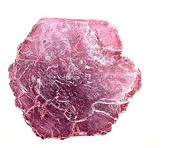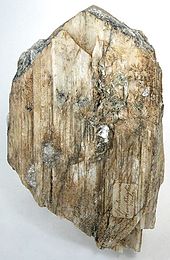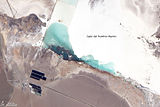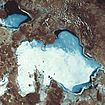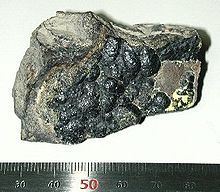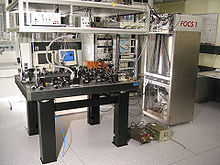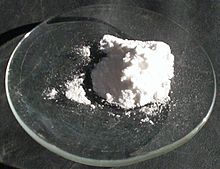
Alkali metal
Background to the schools Wikipedia
SOS Children offer a complete download of this selection for schools for use on schools intranets. SOS Children is the world's largest charity giving orphaned and abandoned children the chance of family life.
| Alkali metals | |||||||||||||||||||||||||||||||||||||||||||||||||||||||||||||||||||||||||||||||||||||||||||||||||||||||||||||||||||||||||||||||||||||||||||||||||||||||||||||||||||||||||||||||||||||||||||||||||||||||||||||||||||||||||||||||||
|---|---|---|---|---|---|---|---|---|---|---|---|---|---|---|---|---|---|---|---|---|---|---|---|---|---|---|---|---|---|---|---|---|---|---|---|---|---|---|---|---|---|---|---|---|---|---|---|---|---|---|---|---|---|---|---|---|---|---|---|---|---|---|---|---|---|---|---|---|---|---|---|---|---|---|---|---|---|---|---|---|---|---|---|---|---|---|---|---|---|---|---|---|---|---|---|---|---|---|---|---|---|---|---|---|---|---|---|---|---|---|---|---|---|---|---|---|---|---|---|---|---|---|---|---|---|---|---|---|---|---|---|---|---|---|---|---|---|---|---|---|---|---|---|---|---|---|---|---|---|---|---|---|---|---|---|---|---|---|---|---|---|---|---|---|---|---|---|---|---|---|---|---|---|---|---|---|---|---|---|---|---|---|---|---|---|---|---|---|---|---|---|---|---|---|---|---|---|---|---|---|---|---|---|---|---|---|---|---|---|---|---|---|---|---|---|---|---|---|---|---|---|---|---|---|---|
|
|
|||||||||||||||||||||||||||||||||||||||||||||||||||||||||||||||||||||||||||||||||||||||||||||||||||||||||||||||||||||||||||||||||||||||||||||||||||||||||||||||||||||||||||||||||||||||||||||||||||||||||||||||||||||||||||||||||
|
|||||||||||||||||||||||||||||||||||||||||||||||||||||||||||||||||||||||||||||||||||||||||||||||||||||||||||||||||||||||||||||||||||||||||||||||||||||||||||||||||||||||||||||||||||||||||||||||||||||||||||||||||||||||||||||||||
| ↓ Period | |||||||||||||||||||||||||||||||||||||||||||||||||||||||||||||||||||||||||||||||||||||||||||||||||||||||||||||||||||||||||||||||||||||||||||||||||||||||||||||||||||||||||||||||||||||||||||||||||||||||||||||||||||||||||||||||||
| 2 |
Lithium (Li) 3 |
||||||||||||||||||||||||||||||||||||||||||||||||||||||||||||||||||||||||||||||||||||||||||||||||||||||||||||||||||||||||||||||||||||||||||||||||||||||||||||||||||||||||||||||||||||||||||||||||||||||||||||||||||||||||||||||||
| 3 |
Sodium (Na) 11 |
||||||||||||||||||||||||||||||||||||||||||||||||||||||||||||||||||||||||||||||||||||||||||||||||||||||||||||||||||||||||||||||||||||||||||||||||||||||||||||||||||||||||||||||||||||||||||||||||||||||||||||||||||||||||||||||||
| 4 |
Potassium (K) 19 |
||||||||||||||||||||||||||||||||||||||||||||||||||||||||||||||||||||||||||||||||||||||||||||||||||||||||||||||||||||||||||||||||||||||||||||||||||||||||||||||||||||||||||||||||||||||||||||||||||||||||||||||||||||||||||||||||
| 5 |
Rubidium (Rb) 37 |
||||||||||||||||||||||||||||||||||||||||||||||||||||||||||||||||||||||||||||||||||||||||||||||||||||||||||||||||||||||||||||||||||||||||||||||||||||||||||||||||||||||||||||||||||||||||||||||||||||||||||||||||||||||||||||||||
| 6 |
Caesium (Cs) 55 |
||||||||||||||||||||||||||||||||||||||||||||||||||||||||||||||||||||||||||||||||||||||||||||||||||||||||||||||||||||||||||||||||||||||||||||||||||||||||||||||||||||||||||||||||||||||||||||||||||||||||||||||||||||||||||||||||
| 7 | Francium (Fr) 87 |
||||||||||||||||||||||||||||||||||||||||||||||||||||||||||||||||||||||||||||||||||||||||||||||||||||||||||||||||||||||||||||||||||||||||||||||||||||||||||||||||||||||||||||||||||||||||||||||||||||||||||||||||||||||||||||||||
|
Legend
|
|||||||||||||||||||||||||||||||||||||||||||||||||||||||||||||||||||||||||||||||||||||||||||||||||||||||||||||||||||||||||||||||||||||||||||||||||||||||||||||||||||||||||||||||||||||||||||||||||||||||||||||||||||||||||||||||||
The alkali metals are a group in the periodic table consisting of the chemical elements lithium (Li), sodium (Na), potassium (K), rubidium (Rb), caesium (Cs), and francium (Fr). This group lies in the s-block of the periodic table as all alkali metals have their outermost electron in an s-orbital. The alkali metals provide the best example of group trends in properties in the periodic table, with elements exhibiting well-characterized homologous behaviour.
The alkali metals have very similar properties: they are all shiny, soft, highly reactive metals at standard temperature and pressure and readily lose their outermost electron to form cations with charge +1. They can all be cut easily with a knife due to their softness, exposing a shiny surface that tarnishes rapidly in air due to oxidation. Because of their high reactivity, they must be stored under oil to prevent reaction with air, and are found naturally only in salts and never as the free element. In the modern IUPAC nomenclature, the alkali metals comprise the group 1 elements, excluding hydrogen (H), which is nominally a group 1 element but not normally considered to be an alkali metal as it rarely exhibits behaviour comparable to that of the alkali metals. All the alkali metals react with water, with the heavier alkali metals reacting more vigorously than the lighter ones.
All the discovered alkali metals occur in nature: in order of abundance, sodium is the most abundant, followed by potassium, lithium, rubidium, caesium, and finally francium, which is very rare due to its extremely high radioactivity and thus occurs only in traces due to its presence in natural decay chains. Experiments have been conducted to attempt the synthesis of ununennium (Uue), which is likely to be the next member of the group, but they have all met with failure as of 2012. However, ununennium may not be an alkali metal due to relativistic effects, which are predicted to have a large influence on the chemical properties of superheavy elements; even if it does turn out to be an alkali metal, it is predicted to have some differences in physical and chemical properties from its lighter homologues.
Most alkali metals have many different applications. Two of the most well-known applications of the pure elements are rubidium and caesium atomic clocks, of which caesium atomic clocks are the most accurate representation of time known as of 2013. A common application of the compounds of sodium is the sodium-vapour lamp, which emits very efficient light. Table salt, or sodium chloride, has been used since antiquity. Sodium and potassium are also essential elements, having major biological roles as electrolytes, and although the other alkali metals are not essential, they also have various effects on the body, both beneficial and harmful.
Characteristics
Chemical
Like other groups, the known members of this family show patterns in its electronic configuration, especially the outermost shells, resulting in trends in chemical behaviour:
| Z | Element | No. of electrons/shell | Electron configuration |
|---|---|---|---|
| 3 | lithium | 2, 1 | [He] 2s1 |
| 11 | sodium | 2, 8, 1 | [Ne] 3s1 |
| 19 | potassium | 2, 8, 8, 1 | [Ar] 4s1 |
| 37 | rubidium | 2, 8, 18, 8, 1 | [Kr] 5s1 |
| 55 | caesium | 2, 8, 18, 18, 8, 1 | [Xe] 6s1 |
| 87 | francium | 2, 8, 18, 32, 18, 8, 1 | [Rn] 7s1 |
Most of the chemistry has been observed only for the first five members of the group. The chemistry of francium is not well established due to its extreme radioactivity; thus, the presentation of its properties here is limited.
All the alkali metals are highly reactive and are never found in elemental forms in nature. Because of this, they are usually stored in mineral oil or kerosene (paraffin oil). They react aggressively with the halogens to form the alkali metal halides, which are white ionic crystalline compounds that are all soluble in water except lithium fluoride (LiF). The alkali metals also react with water to form strongly alkaline hydroxides and thus should be handled with great care. The heavier alkali metals react more vigorously than the lighter ones; for example, when dropped into water, caesium produces a larger explosion than potassium. The alkali metals have the lowest first ionisation energies in their respective periods of the periodic table because of their low effective nuclear charge and the ability to attain a noble gas configuration by losing just one electron. The second ionisation energy of all of the alkali metals is very high as it is in a full shell that is also closer to the nucleus; thus, they almost always lose a single electron, forming cations. The alkalides are an exception: they are unstable compounds which contain alkali metals in a −1 oxidation state, which is very unusual as before the discovery of the alkalides, the alkali metals were not expected to be able to form anions and were thought to be able to appear in salts only as cations. The alkalide anions have filled s-subshells, which gives them more stability and allows them to exist. All the stable alkali metals except lithium are known to be able to form alkalides, and the alkalides have much theoretical interest due to their unusual stoichiometry and low ionisation potentials. Alkalides are chemically similar to the electrides, which are salts with trapped electrons acting as anions. A particularly striking example of an alkalide is "inverse sodium hydride", H+Na−, as opposed to the usual sodium hydride, Na+H−: it is unstable in isolation, due to its high energy resulting from the displacement of two electrons from hydrogen to sodium, although several derivatives are predicted to be metastable or stable.
The chemistry of lithium shows several differences from that of the rest of the group as the small Li+ cation polarises anions and gives its compounds a more covalent character. Lithium and magnesium have a diagonal relationship: because of this, lithium has some similarities to magnesium. For example, lithium forms a stable nitride, a property common among all the alkaline earth metals (magnesium's group) but unique among the alkali metals. In addition, among their respective groups, only lithium and magnesium form covalent organometallic compounds (e.g. Li Me and MgMe2). Lithium fluoride is the only alkali metal halide that is not soluble in water, and lithium hydroxide is the only alkali metal hydroxide that is not deliquescent. Francium is also predicted show some differences due to its high atomic weight, causing its electrons to travel at considerable fractions of the speed of light and thus making relativistic effects more prominent. In contrast to the trend of decreasing electronegativities and ionisation energies of the alkali metals, francium's electronegativity and ionisation energy are predicted to be higher than caesium's due to the relativistic stabilisation of the 7s electrons; also, its atomic radius is expected to be abnormally low.
Compounds and reactions
Reaction with water (alkali metal hydroxides)
All the alkali metals react vigorously or explosively with cold water, producing an aqueous solution of the strongly basic alkali metal hydroxide and releasing hydrogen gas. This reaction becomes more vigorous going down the group: lithium reacts steadily with effervescence, but sodium and potassium can ignite and rubidium and caesium sink in water and generate hydrogen gas so rapidly that shock waves form in the water that may shatter glass containers. When an alkali metal is dropped into water, it produces an explosion, of which there are two separate stages. The metal reacts with the water first, breaking the hydrogen bonds in the water and producing hydrogen gas; this takes place faster for the more reactive heavier alkali metals. Second, the heat generated by the first part of the reaction often ignites the hydrogen gas, causing it to burn explosively into the surrounding air. This secondary hydrogen gas explosion produces the visible flame above the bowl of water, lake or other body of water, not the initial reaction of the metal with water (which tends to happen mostly under water).
The chemical reaction of the alkali metals with water is:
- 2 M (s) + 2 H2O (l) → 2 MOH (aq) + H2 (g) (where M represents an alkali metal)
Reaction with nitrogen (alkali metal nitrides)
Lithium, the lightest of the alkali metals, is the only alkali metal which reacts with nitrogen at standard conditions, and its nitride is the only stable alkali metal nitride. Nitrogen is an unreactive gas because breaking the strong triple bond in the dinitrogen molecule (N2) requires a lot of energy. The formation of an alkali metal nitride would consume the ionisation energy of the alkali metal (forming M+ ions), the energy required to break the triple bond in N2 and the formation of N3− ions, and all the energy released from the formation of an alkali metal nitride is from the lattice energy of the alkali metal nitride. The lattice energy is maximised with small, highly charged ions; the alkali metals do not form highly charged ions, only forming ions with a charge of +1, so only lithium, the smallest alkali metal, can release enough lattice energy to make the reaction with nitrogen exothermic, forming lithium nitride. The reactions of the other alkali metals with nitrogen would not release enough lattice energy and would thus be endothermic, so they do not form nitrides at standard conditions. ( Sodium nitride (Na3N) and potassium nitride (K3N), while existing, are extremely unstable, being prone to decomposing back into their constituent elements, and cannot be produced by reacting the elements with each other at standard conditions.)
The chemical reaction of lithium with nitrogen is:
- 6 Li (s) + N2 (g) → 2 Li3N (s)
Reaction with oxygen (alkali metal oxides)
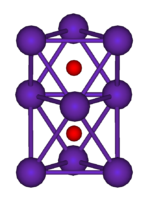 |
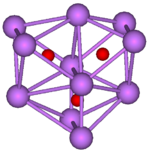 |
|
|
Rb9O2 cluster, composed of two regular octahedra connected to each other by one face
|
Cs11O3 cluster, composed of three regular octahedra where each octahedron is connected to to both of the others by one face each. All three octahedra have one edge in common.
|
All the alkali metals react vigorously with oxygen at standard conditions. They form various types of oxides, such as simple oxides (containing the O2− ion), peroxides (containing the O2−
2 ion, where there is a single bond between the two oxygen atoms), superoxides (containing the O−
2 ion), and many others. Lithium burns in air to form lithium oxide, but sodium reacts with oxygen to form a mixture of sodium oxide and sodium peroxide. Potassium forms a mixture of potassium peroxide and potassium superoxide, while rubidium and caesium form the superoxide exclusively. Their reactivity increases going down the group: while lithium, sodium and potassium merely burn in air, rubidium and caesium are pyrophoric (spontaneously catch fire in air).
The smaller alkali metals tend to polarise the more complex anions (the peroxide and superoxide) due to their small size. This attracts the electrons in the more complex anions towards one of its constituent oxygen atoms, forming an oxide ion and an oxygen atom. This causes lithium to form the oxide exclusively on reaction with oxygen at room temperature. This effect becomes drastically weaker for the larger sodium and potassium, allowing them to form the less stable peroxides. Rubidium and caesium, at the bottom of the group, are so large that even the least stable superoxides can form. Because the superoxide releases the most energy when formed, the superoxide is preferentially formed for the larger alkali metals where the more complex anions are not polarised. (The oxides and peroxides for these alkali metals do exist, but do not form upon direct reaction of the metal with oxygen at standard conditions.)
The chemical reaction of the alkali metals with oxygen that forms the oxide is:
- 4 M (s) + O2 (g) → 2 M2O (s) (where M represents an alkali metal)
The chemical reaction that forms the peroxide is:
- 2 M (s) + O2 (g) → M2O2 (s) (where M represents an alkali metal)
The chemical reaction that forms the superoxide is:
- M (s) + O2 (g) → MO2 (s) (where M represents an alkali metal)
Rubidium and caesium can form even more complicated oxides than the superoxides. Rubidium can form Rb6O and Rb9O2 upon oxidation in air, while caesium forms an immense variety of oxides, such as the ozonide CsO3 and several brightly coloured suboxides, such as Cs7O, Cs4O, Cs11O3, Cs3O (dark-green), CsO, Cs3O2, as well as Cs7O2. The latter may be heated under vacuum to generate Cs2O.
Reaction with the halogens (alkali metal halides)
The alkali metals are among the most electropositive elements on the periodic table and thus tend to bond ionically to the most electronegative elements on the periodic table, the halogens, forming salts known as the alkali metal halides. This includes sodium chloride, otherwise known as common salt. The reactivity becomes higher from lithium to caesium and drops from fluorine to iodine. All of the alkali metal halides have the formula MX where M is an alkali metal and X is a halogen. They are all white ionic crystalline solids. All the alkali metal halides are soluble in water except for lithium fluoride (LiF), which is insoluble in water due to its very high lattice enthalpy. The high lattice enthalpy of lithium fluoride is due to the small sizes of the Li+ and F− ions, causing the electrostatic interactions between them to be strong.
The chemical reaction of the alkali metals with the halogens is:
- 2 M + X2 → 2 MX (where M represents an alkali metal and X represents a halogen)
Physical
The alkali metals are all silver-coloured except for caesium, which has a golden tint. All are soft and have low densities, melting points, and boiling points.
The table below is a summary of the key physical and atomic properties of the alkali metals. Data marked with question marks are either uncertain or are estimations partially based on periodic trends rather than observations.
| Alkali metal | Standard atomic weight ( u) |
Melting point | Boiling point | Density (g/cm3) |
Electronegativity ( Pauling) |
First ionisation energy ( kJ·mol−1) |
Atomic radius ( pm) |
Flame test colour | |
|---|---|---|---|---|---|---|---|---|---|
| Lithium | 6.94(1) | 453.69 K, 180.54 °C, 356.97 °F |
1615 K, 1342 °C, 2448 °F |
0.534 | 0.98 | 520.2 | 152 | Red | |
| Sodium | 22.98976928(2) | 370.87 K, 97.72 °C, 207.9 °F |
1156 K, 883 °C, 1621 °F |
0.968 | 0.93 | 495.8 | 186 | Strong persistent orange or yellow | |
| Potassium | 39.0983(1) | 336.53 K, 63.38 °C, 146.08 °F |
1032 K, 759 °C, 1398 °F |
0.89 | 0.82 | 418.8 | 227 | Lilac or pink | |
| Rubidium | 85.4678(3) | 312.467 K, 39.31 °C, 102.76 °F |
961 K, 688 °C, 1270 °F |
1.532 | 0.82 | 403.0 | 248 | Red or reddish-violet | |
| Caesium | 132.9054519(2) | 301.59 K, 28.44 °C, 83.19 °F |
944 K, 671 °C, 1240 °F |
1.93 | 0.79 | 375.7 | 265 | Blue or violet | |
| Francium | [223] | ? 300 K, ? 27 °C, ? 80 °F |
? 950 K, ? 677 °C, ? 1250 °F |
? 1.87 | ? 0.7 | 380 | ? | ? | |
Nuclear
| Z |
Alkali metal |
Stable |
Decays |
unstable: italics odd-odd isotopes coloured pink
|
||
|---|---|---|---|---|---|---|
| 3 | lithium | 2 | — | 7Li | 6Li | |
| 11 | sodium | 1 | — | 23Na | ||
| 19 | potassium | 2 | 1 | 39K | 41K | 40K |
| 37 | rubidium | 1 | 1 | 85Rb | 87Rb | |
| 55 | caesium | 1 | — | 133Cs | ||
| 87 | francium | — | — | No primordial isotopes | ||
All the alkali metals have odd atomic numbers; hence, their isotopes must be either odd-odd (both proton and neutron number are odd) or odd-even (proton number is odd, but neutron number is even). Odd-odd nuclei have even mass numbers, while odd-even nuclei have odd mass numbers. Odd-odd primordial nuclides are rare because most odd-odd nuclei are highly unstable with respect to beta decay, because the decay products are even-even, and are therefore more strongly bound, due to nuclear pairing effects: out of the 254 stable or observationally stable nuclides, only five have both an odd number of protons and odd number of neutrons: hydrogen-2 ( deuterium), lithium-6, boron-10, nitrogen-14, and tantalum-180m. The first four of these have low mass, for which changing a proton to a neutron or vice versa would lead to a very lopsided proton-neutron ratio; the last, tantalum-180m, is the only primordial nuclear isomer, which has not yet been observed to decay despite experimental attempts and theoretical predictions that it cannot truly be stable (its decay is greatly inhibited by its high spin). Also, four long-lived radioactive odd-odd nuclides ( potassium-40, vanadium-50, lanthanum-138, and lutetium-176) occur naturally.
Due to the great rarity of odd-odd nuclei, almost all the primordial isotopes of the alkali metals are odd-even (the exceptions being the light stable isotope lithium-6 and the long-lived radioisotope potassium-40). For a given odd mass number, there can be only a single beta-stable nuclide, since there is not a difference in binding energy between even-odd and odd-even comparable to that between even-even and odd-odd, leaving other nuclides of the same mass number ( isobars) free to beta decay toward the lowest-mass nuclide. An effect of the instability of an odd number of either type of nucleons is that odd-numbered elements, such as the alkali metals, tend to have fewer stable isotopes than even-numbered elements. Of the 26 monoisotopic elements that have only a single stable isotope, all but one have an odd atomic number — the single exception to both rules being beryllium. All of these elements also have an even number of neutrons, with the single exception again being beryllium.
All of the alkali metals except lithium and caesium have at least one naturally occurring radioisotope: sodium-22 and sodium-24 are trace radioisotopes produced cosmogenically, potassium-40 and rubidium-87 have very long half-lives and thus occur naturally, and all isotopes of francium are radioactive. Caesium was also thought to be radioactive in the early 20th century, although it has no naturally occurring radioisotopes. (Francium had not been discovered yet at that time.) The natural radioisotope of potassium, potassium-40, makes up about 0.012% of natural potassium, and thus natural potassium is weakly radioactive. The Soviet scientist D. K. Dobroserdov observed this weak radioactivity in a sample of potassium in 1925 and incorrectly assumed that eka-caesium (currently known to be francium) was contaminating the sample. He then claimed to have discovered eka-caesium and predicted its properties, naming it russium after his home country. Shortly thereafter, Dobroserdov began to focus on his teaching career at the Polytechnic Institute of Odessa, and he did not pursue the element further.

Caesium-137, with a half-life of 30.17 years, is one of the two principal medium-lived fission products, along with strontium-90, which are responsible for most of the radioactivity of spent nuclear fuel after several years of cooling, up to several hundred years after use. It constitutes most of the radioactivity still left from the Chernobyl accident. 137Cs beta decays to barium-137m (a short-lived nuclear isomer), which then decays to nonradioactive barium-137. It is a strong emitter of gamma radiation. 137Cs has a very low rate of neutron capture and cannot be feasibly disposed of in this way, but must be allowed to decay. 137Cs has been used as a tracer in hydrologic studies, analogous to the use of 3H. Small amounts of caesium-134 and caesium-137 were released into the environment during nearly all nuclear weapon tests and some nuclear accidents, most notably the Goiânia accident and the Chernobyl disaster. As of 2005, caesium-137 is the principal source of radiation in the zone of alienation around the Chernobyl nuclear power plant. Together with caesium-134, iodine-131, and strontium-90, caesium-137 was among the isotopes distributed by the reactor explosion which constitute the greatest risk to health. The improper handling of caesium-137 gamma ray sources can lead to release of this radioisotope and radiation injuries. Perhaps the best-known case is the Goiânia accident of 1987, in which an improperly-disposed-of radiation therapy system from an abandoned clinic in the city of Goiânia, Brazil, was scavenged from a junkyard, and the glowing caesium salt sold to curious, uneducated buyers. This led to four deaths and serious injuries from radiation exposure.
Periodic trends
The alkali metals are more similar to each other than the elements in any other group are to each other. For instance, when moving down the table, all known alkali metals show increasing atomic radius, decreasing electronegativity, increasing reactivity, and decreasing melting and boiling points. In general, their densities increase when moving down the table, with the exception that potassium is less dense than sodium.
Atomic and ionic radii
The atomic radii of the alkali metals increase going down the group. Because of the shielding effect, when an atom has more than one electron shell, each electron feels electric repulsion from the other electrons as well as electric attraction from the nucleus. In the alkali metals, the outermost electron only feels a net charge of +1, as some of the nuclear charge (which is equal to the atomic number) is cancelled by the inner electrons; the number of inner electrons of an alkali metal is always one less than the nuclear charge. Therefore, the only factor which affects the atomic radius of the alkali metals is the number of electron shells. Since this number increases down the group, the atomic radius must also increase down the group.
The ionic radii of the alkali metals are much smaller than their atomic radii. This is because the outermost electron of the alkali metals is in a different electron shell than the inner electrons, and thus when it is removed the resulting atom has one fewer electron shell and is smaller. Additionally, the effective nuclear charge has increased, and thus the electrons are attracted more strongly towards the nucleus and the ionic radius decreases.
First ionisation energy
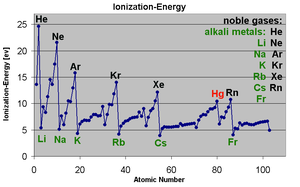
The first ionisation energy of an element or molecule is the energy required to move the most loosely held electron from one mole of gaseous atoms of the element or molecules to form one mole of gaseous ions with electric charge +1. The factors affecting the first ionisation energy are the nuclear charge, the amount of shielding by the inner electrons and the distance from the most loosely held electron from the nucleus, which is always an outer electron in main group elements. The first two factors change the effective nuclear charge the most loosely held electron feels. Since the outermost electron of alkali metals always feel the same effective nuclear charge (+1), the only factor which affects the first ionisation energy is the distance from the outermost electron to the nucleus. Since this distance increases down the group, the outermost electron feels less attraction from the nucleus and thus the first ionisation energy decreases. (This trend is broken in francium due to the relativistic stabilization and contraction of the 7s orbital, bringing francium's valence electron closer to the nucleus than would be expected from non-relativistic calculations. This makes francium's outermost electron feel more attraction from the nucleus, increasing its first ionisation energy slightly beyond that of caesium.)
The second ionisation energy of the alkali metals is much higher than the first as the second-most loosely held electron is part of a fully filled electron shell and is thus difficult to remove.
Reactivity
The reactivities of the alkali metals increase going down the group. This is the result of a combination of two factors: the first ionisation energies and atomisation energies of the alkali metals. Because the first ionisation energy of the alkali metals decreases down the group, it is easier for the outermost electron to be removed from the atom and participate in chemical reactions, thus increasing reactivity down the group. The atomisation energy measures the strength of the metallic bond of an element, which falls down the group as the atoms increase in radius and thus the metallic bond must increase in length, making the delocalised electrons further away from the attraction of the nuclei of the heavier alkali metals. Adding the atomisation and first ionisation energies gives a quantity closely related to (but not equal to) the activation energy of the reaction of an alkali metal with another substance. This quantity decreases going down the group, and so does the activation energy; thus, chemical reactions can occur faster and the reactivity increases down the group.
Electronegativity
Electronegativity is a chemical property that describes the tendency of an atom or a functional group to attract electrons (or electron density) towards itself. If the bond between sodium and chlorine in sodium chloride were covalent, the pair of shared electrons would be attracted to the chlorine because the effective nuclear charge on the outer electrons is +7 in chlorine but is only +1 in sodium. The electron pair is attracted so close to the chlorine atom that they are practically transferred to the chlorine atom (an ionic bond). However, if the sodium atom was replaced by a lithium atom, the electrons will not be attracted as close to the chlorine atom as before because the lithium atom is smaller, making the electron pair more strongly attracted to the closer effective nuclear charge from lithium. Hence, the larger alkali metal atoms (further down the group) will be less electronegative as the bonding pair is less strongly attracted towards them.
Because of the higher electronegativity of lithium, some of its compounds have a more covalent character. For example, lithium iodide (LiI) will dissolve in organic solvents, a property of most covalent compounds. Lithium fluoride (LiF) is the only alkali halide that is not soluble in water, and lithium hydroxide (LiOH) is the only alkali metal hydroxide that is not deliquescent.
Melting and boiling points
-
Melting and boiling points of the alkali metals Alkali metal Melting point Boiling point Lithium 453.69 K (180.54 °C) 1615 K (1342 °C) Sodium 370.87 K (97.72 °C) 1156 K (883 °C) Potassium 336.53 K (63.38 °C) 1032 K (759 °C) Rubidium 312.46 K (39.31 °C) 961 K (688 °C) Caesium 301.59 K (28.44 °C) 944 K (671 °C) Francium ? 300 K (? 27 °C) ? 950 K (? 677 °C)
The melting point of a substance is the point where it changes state from solid to liquid while the boiling point of a substance (in liquid state) is the point where the vapor pressure of the liquid equals the environmental pressure surrounding the liquid and all the liquid changes state to gas. As a metal is heated to its melting point, the metallic bonds keeping the atoms in place weaken so that the atoms can move around, and the metallic bonds eventually break completely at the metal's boiling point. Therefore, the falling melting and boiling points of the alkali metals indicate that the strength of the metallic bonds of the alkali metals decreases down the group. This is because metal atoms are held together by the electromagnetic attraction from the positive ions to the delocalised electrons. As the atoms increase in size going down the group (because their atomic radius increases), the nuclei of the ions move further away from the delocalised electrons and hence the metallic bond becomes weaker so that the metal can more easily melt and boil, thus lowering the melting and boiling points. (The increased nuclear charge is not a relevant factor due to the shielding effect.)
Density
The alkali metals all have the same crystal structure ( body-centred cubic) and thus the only relevant factors are the number of atoms that can fit into a certain volume and the mass of one of the atoms, since density is defined as mass per unit volume. The first factor depends on the volume of the atom and thus the atomic radius, which increases going down the group; thus, the volume of an alkali metal atom increases going down the group. The mass of an alkali metal atom also increases going down the group. Thus, the trend for the densities of the alkali metals depends on their atomic weights and atomic radii; if figures for these two factors are known, the ratios between the densities of the alkali metals can then be calculated. The resultant trend is that the densities of the alkali metals increase down the table, with an exception at potassium. Due to having the lowest atomic weight of all the elements in their period and having the largest atomic radius for their periods, the alkali metals are the least dense metals in the periodic table. Lithium, sodium, and potassium are the only three metals in the periodic table that are less dense than water.
Extensions
Although francium is the heaviest alkali metal that has been discovered, there has been some theoretical work predicting the physical and chemical characteristics of the hypothetical heavier alkali metals. Being the first period 8 element, the undiscovered element ununennium (element 119) is predicted to be the next alkali metal after francium and behave much like their lighter congeners; however, it is also predicted to differ from the lighter alkali metals in some properties. Its chemistry is predicted to be closer to that of potassium or rubidium instead of caesium or francium. This is unusual as periodic trends, ignoring relativistic effects would predict ununennium to be even more reactive than caesium and francium. This lowered reactivity is due to the relativistic stabilisation of ununennium's valence electron, increasing ununennium's first ionisation energy and decreasing the metallic and ionic radii; this effect is already seen for francium. This assumes that ununennium will behave chemically as an alkali metal, which, although likely, may not be true due to relativistic effects. The relativistic stabilisation of the 8s orbital also increases ununennium's electron affinity far beyond that of caesium and francium; indeed, ununennium is expected to have an electron affinity higher than all the alkali metals lighter than it. Relativistic effects also cause a very large drop in the polarisability of ununennium. On the other hand, ununennium is predicted to continue the trend of melting points decreasing going down the group, being expected to have a melting point between 0 °C and 30 °C.
The stabilisation of ununennium's valence electron and thus the contraction of the 8s orbital cause its atomic radius to be lowered to 240 pm, very close to that of rubidium (247 pm), so that the chemistry of ununennium in the +1 oxidation state should be more similar to the chemistry of rubidium than to that of francium. On the other hand, the ionic radius of the Uue+ ion is predicted to be larger than that of Rb+, because the 7p orbitals are destabilised and are thus larger than the p-orbitals of the lower shells. Ununennium may also show the +3 oxidation state, which is not seen in any other alkali metal, in addition to the +1 oxidation state that is characteristic of the other alkali metals and is also the main oxidation state of all the known alkali metals: this is because of the destabilisation and expansion of the 7p3/2 spinor, causing its outermost electrons to have a lower ionisation energy than what would otherwise be expected.
Not as much work has been done predicting the properties of the alkali metals beyond ununennium. Although a simple extrapolation of the periodic table would put element 169, unhexennium, under ununennium, Dirac-Fock calculations predict that the next alkali metal after ununennium may actually be element 165, unhexpentium, which is predicted to have the electron configuration [Uuo] 5g18 6f14 7d10 8s2 8p1/22 9s1. Further calculations show that unhexpentium would follow the trend of increasing ionisation energy beyond caesium, having an ionisation energy comparable to that of sodium, and that it should also continue the trend of decreasing atomic radii beyond caesium, having an atomic radius comparable to that of potassium. However, the 7d electrons of unhexpentium may also be able to participate in chemical reactions along with the 9s electron, possibly allowing oxidation states beyond +1 and perhaps even making unhexpentium behave more like a boron group element than an alkali metal.
The probable properties of the alkali metals beyond unhexpentium have not been explored yet as of 2012. In periods 8 and above of the periodic table, relativistic and shell-structure effects become so strong that extrapolations from lighter congeners become completely inaccurate. In addition, the relativistic and shell-structure effects (which stabilise the s-orbitals and destabilise and expand the d-, f-, and g-orbitals of higher shells) have opposite effects, causing even larger difference between relativistic and non-relativistic calculations of the properties of elements with such high atomic numbers. Due to the alkali and alkaline earth metals both being s-block elements, these predictions for the trends and properties of ununennium and unhexpentium also mostly apply to the corresponding alkaline earth metals unbinilium (Ubn) and unhexhexium (Uhh).
Other similar substances
Hydrogen
The element hydrogen, with one electron per neutral atom, is usually placed at the top of Group 1 of the periodic table for convenience, but hydrogen is not normally considered to be an alkali metal; when it is considered to be an alkali metal, it is because of its atomic properties and not its chemical properties. Under typical conditions, pure hydrogen exists as a diatomic gas consisting of two atoms per molecule (H2); however, the alkali metals only form diatomic molecules (such as dilithium, Li2) at high temperatures, when they are in the gaseous state.
Hydrogen, like the alkali metals, has one valence electron and reacts easily with the halogens, but the similarities end there. Its placement above lithium is primarily due to its electron configuration and not its chemical properties. It is sometimes placed above carbon due to their similar electronegativities or fluorine due to their similar chemical properties.
The first ionisation energy of hydrogen (1312.0 kJ/mol) is much higher than that of the alkali metals. As only one additional electron is required to fill in the outermost shell of the hydrogen atom, hydrogen often behaves like a halogen, forming the negative hydride ion, and is sometimes considered to be a halogen. (The alkali metals can also form negative ions, known as alkalides, but these are little more than laboratory curiosities, being unstable.) Under extremely high pressures, such as those found at the cores of Jupiter and Saturn, hydrogen does become metallic and behaves like an alkali metal; in this phase, it is known as metallic hydrogen.
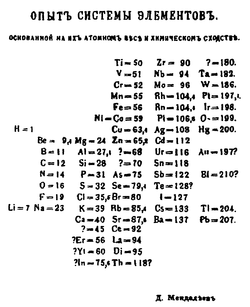
Ammonium
The ammonium ion (NH+
4) has very similar properties to the heavier alkali metals, acting as an alkali metal intermediate between potassium and rubidium, and is often considered a close relative. For example, most alkali metal salts are soluble in water, a property which ammonium salts share. Ammonium is expected to behave as a metal (NH+
4 ions in a sea of electrons) at very high pressures, such as inside the ice giants Uranus and Neptune.
Thallium

Thallium displays the +1 oxidation state that all the known alkali metals display, and thallium compounds with thallium in its +1 oxidation state closely resemble the corresponding potassium or silver compounds due to the similar ionic radii of the Tl+ (164 pm), K+ (152 pm) and Ag+ (129 pm) ions. It was sometimes considered an alkali metal in continental Europe (but not in England) in the years immediately following its discovery, and was placed just after caesium as the sixth alkali metal in Dmitri Mendeleev's 1869 periodic table and Julius Lothar Meyer's 1868 periodic table. (Mendeleev's 1871 periodic table and Meyer's 1870 periodic table put thallium in its current position in the boron group and leave the space below caesium blank.) However, thallium also displays the oxidation state +3, which no known alkali metal displays (although ununennium, the undiscovered seventh alkali metal, is predicted to possibly display the +3 oxidation state). The sixth alkali metal is now considered to be francium.
History
Etymology
The alkali metals are so called because their hydroxides are all strong alkalis when dissolved in water.
Discovery
Lithium
Petalite (LiAlSi4O10) was discovered in 1800 by the Brazilian chemist José Bonifácio de Andrada in a mine on the island of Utö, Sweden. However, it was not until 1817 that Johan August Arfwedson, then working in the laboratory of the chemist Jöns Jacob Berzelius, detected the presence of a new element while analyzing petalite ore. This new element formed compounds similar to those of sodium and potassium, though its carbonate and hydroxide were less soluble in water and more alkaline than the other alkali metals. Berzelius gave the unknown material the name "lithion/lithina", from the Greek word λιθoς (transliterated as lithos, meaning "stone"), to reflect its discovery in a solid mineral, as opposed to potassium, which had been discovered in plant ashes, and sodium, which was known partly for its high abundance in animal blood. He named the metal inside the material "lithium".
Sodium
Sodium compounds have been known since ancient times; salt (sodium chloride) has been an important commodity in human activities, as testified by the English word salary, referring to salarium, the wafers of salt sometimes given to Roman soldiers along with their other wages. In medieval Europe a compound of sodium with the Latin name of sodanum was used as a headache remedy. Pure sodium was not isolated until 1807 by Humphry Davy through the electrolysis of caustic soda (now called sodium hydroxide), a very similar method to the one used to isolate potassium earlier that year.
Potassium
While potash has been used since ancient times, it was not understood for most of its history to be a fundamentally different substance from sodium mineral salts. Georg Ernst Stahl obtained experimental evidence which led him to suggest the fundamental difference of sodium and potassium salts in 1702, and Henri Louis Duhamel du Monceau was able to prove this difference in 1736. The exact chemical composition of potassium and sodium compounds, and the status as chemical element of potassium and sodium, was not known then, and thus Antoine Lavoisier did include the alkali in his list of chemical elements in 1789. Pure potassium was first isolated in 1807 in England by Sir Humphry Davy, who derived it from caustic potash (KOH, potassium hydroxide) by the use of electrolysis of the molten salt with the newly invented voltaic pile. Potassium was the first metal that was isolated by electrolysis. Later that same year, Davy reported extraction of sodium from the similar substance caustic soda (NaOH, lye) by a similar technique, demonstrating the elements, and thus the salts, to be different.
Rubidium
Rubidium was discovered in 1861 in Heidelberg, Germany by Robert Bunsen and Gustav Kirchhoff, the first people to suggest finding new elements by spectrum analysis, in the mineral lepidolite through the use of a spectroscope. Because of the bright red lines in its emission spectrum, they chose a name derived from the Latin word rubidus, meaning dark red. Rubidium's discovery succeeded that of caesium, also discovered by Bunsen and Kirchhoff through spectroscopy.
Caesium
In 1860, Robert Bunsen and Gustav Kirchhoff discovered caesium in the mineral water from Dürkheim, Germany. Due to the bright-blue lines in its emission spectrum, they chose a name derived from the Latin word caesius, meaning sky-blue. Caesium was the first element to be discovered spectroscopically, only one year after the invention of the spectroscope by Bunsen and Kirchhoff.
Francium
There were at least four erroneous and incomplete discoveries before Marguerite Perey of the Curie Institute in Paris, France discovered francium in 1939 by purifying a sample of actinium-227, which had been reported to have a decay energy of 220 keV. However, Perey noticed decay particles with an energy level below 80 keV. Perey thought this decay activity might have been caused by a previously unidentified decay product, one that was separated during purification, but emerged again out of the pure actinium-227. Various tests eliminated the possibility of the unknown element being thorium, radium, lead, bismuth, or thallium. The new product exhibited chemical properties of an alkali metal (such as coprecipitating with caesium salts), which led Perey to believe that it was element 87, caused by the alpha decay of actinium-227. Perey then attempted to determine the proportion of beta decay to alpha decay in actinium-227. Her first test put the alpha branching at 0.6%, a figure that she later revised to 1%. It was the last element discovered in nature, rather than by synthesis.
Eka-francium
The next element below francium ( eka-francium) is very likely to be ununennium (Uue), element 119, although this is not completely certain due to relativistic effects. The synthesis of ununennium was first attempted in 1985 by bombarding a target of einsteinium-254 with calcium-48 ions at the superHILAC accelerator at Berkeley, California. No atoms were identified, leading to a limiting yield of 300 nb.
- 254
99Es + 48
20Ca → 302
119Uue* → no atoms
It is highly unlikely that this reaction will be able to create any atoms of ununennium in the near future, given the extremely difficult task of making sufficient amounts of 254Es, which is favoured for production of ultraheavy elements because of its large mass, relatively long half-life of 270 days, and availability in significant amounts of several micrograms, to make a large enough target to increase the sensitivity of the experiment to the required level; einsteinium has not been found in nature and has only been produced in laboratories. However, given that ununennium is only the first period 8 element on the extended periodic table, it may well be discovered in the near future through other reactions; indeed, another attempt to synthesise ununennium by bombarding a berkelium target with titanium ions is under way at the GSI Helmholtz Centre for Heavy Ion Research in Darmstadt, Germany. Currently, none of the period 8 elements have been discovered yet, and it is also possible, due to drip instabilities, that only the lower period 8 elements, up to around element 128, are physically possible. No attempts at synthesis have been made for any heavier alkali metals, such as unhexpentium, due to their extremely high atomic number.
Occurrence
In the Solar System
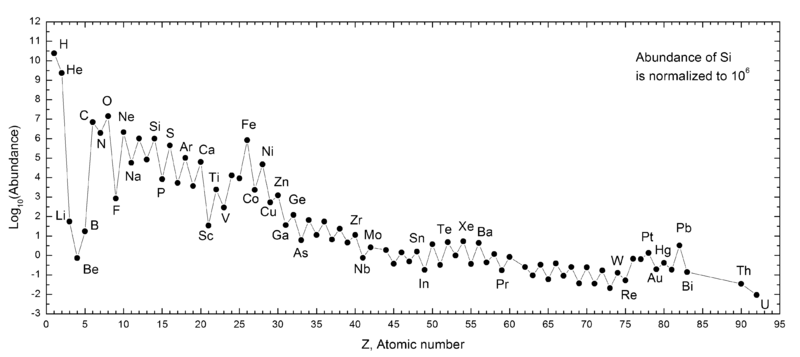
The Oddo-Harkins rule holds that elements with even atomic numbers are more common that those with odd atomic numbers, with the exception of hydrogen. This rule argues that elements with odd atomic numbers have one unpaired proton and are more likely to capture another, thus increasing their atomic number. In elements with even atomic numbers, protons are paired, with each member of the pair offsetting the spin of the other, enhancing stability. All the alkali metals have odd atomic numbers and they are not as common as the elements with even atomic numbers adjacent to them (the noble gases and the alkaline earth metals) in the Solar System. The heavier alkali metals are also less abundant than the lighter ones as the alkali metals from rubidium onward can only be synthesized in supernovae and not in stellar nucleosynthesis. Lithium is also much less abundant than sodium and potassium as it is poorly synthesized in both Big Bang nucleosynthesis and in stars: the Big Bang could only produce trace quantities of lithium, beryllium and boron due to the absence of a stable nucleus with 5 or 8 nucleons, and stellar nucleosynthesis could only pass this bottleneck by the triple-alpha process, fusing three helium nuclei to form carbon, and skipping over those three elements.
On Earth
The Earth formed from the same cloud of matter that formed the Sun, but the planets acquired different compositions during the formation and evolution of the solar system. In turn, the natural history of the Earth caused parts of this planet to have differing concentrations of the elements. The mass of the Earth is approximately 5.98×1024 kg. It is composed mostly of iron (32.1%), oxygen (30.1%), silicon (15.1%), magnesium (13.9%), sulfur (2.9%), nickel (1.8%), calcium (1.5%), and aluminium (1.4%); with the remaining 1.2% consisting of trace amounts of other elements. Due to mass segregation, the core region is believed to be primarily composed of iron (88.8%), with smaller amounts of nickel (5.8%), sulfur (4.5%), and less than 1% trace elements.
The alkali metals, due to their high reactivity, do not occur naturally in pure form in nature. They are lithophiles and therefore remain close to the Earth's surface because they combine readily with oxygen and so associate strongly with silica, forming relatively low-density minerals that do not sink down into the Earth's core. Potassium, rubidium and caesium are also incompatible elements due to their low ionic radii.
Sodium and potassium are very abundant in earth, both being among the ten most common elements in Earth's crust; sodium makes up approximately 2.6% of the Earth's crust measured by weight, making it the sixth most abundant element overall and the most abundant alkali metal. Potassium makes up approximately 1.5% of the Earth's crust and is the seventh most abundant element. Sodium is found in many different minerals, of which the most common is ordinary salt (sodium chloride), which occurs in vast quantities dissolved in seawater. Other solid deposits include halite, amphibole, cryolite, nitratine, and zeolite.
Lithium, due to its relatively low reactivity, can be found in seawater in large amounts; it is estimated that seawater is approximately 0.14 to 0.25 parts per million (ppm) or 25 micromolar.
Rubidium is approximately as abundant as zinc and more abundant than copper. It occurs naturally in the minerals leucite, pollucite, carnallite, zinnwaldite, and lepidolite. Caesium is more abundant than some commonly known elements, such as antimony, cadmium, tin, and tungsten, but is much less abundant than rubidium.
Francium-223, the only naturally occurring isotope of francium, is the product of the alpha decay of actinium-227 and can be found in trace amounts in uranium and thorium minerals. In a given sample of uranium, there is estimated to be only one francium atom for every 1018 uranium atoms. It has been calculated that there is at most 30 g of francium in the earth's crust at any time, due to its extremely short half-life of 22 minutes.
Production
The production of pure alkali metals is difficult due to their extreme reactivity with commonly used substances, such as water. The alkali metals are so reactive that they cannot be displaced by other elements and must be isolated through electrolysis.
Lithium salts have to be extracted from the water of mineral springs, brine pools, and brine deposits. The metal is produced electrolytically from a mixture of fused lithium chloride and potassium chloride.
Potassium occurs in many minerals, such as sylvite ( potassium chloride). It is occasionally produced through separating the potassium from the chlorine in potassium chloride, but is more often produced through electrolysis of potassium hydroxide, found extensively in places such as Canada, Russia, Belarus, Germany, Israel, United States, and Jordan, in a method similar to how sodium was produced in the late 1800s and early 1900s. It can also be produced from seawater. Sodium occurs mostly in seawater and dried seabed, but is now produced through electrolysis of sodium chloride by lowering the melting point of the substance to below 700 °C through the use of a Downs cell. Extremely pure sodium can be produced through the thermal decomposition of sodium azide.
For several years in the 1950s and 1960s, a by-product of the potassium production called Alkarb was a main source for rubidium. Alkarb contained 21% rubidium while the rest was potassium and a small fraction of caesium. Today the largest producers of caesium, for example the Tanco Mine, Manitoba, Canada, produce rubidium as by-product from pollucite. Today, a common method for separating rubidium from potassium and caesium is the fractional crystallization of a rubidium and caesium alum (Cs,Rb)Al(SO4)2·12H2O, which yields pure rubidium alum after approximately 30 different reactions. The limited applications and the lack of a mineral rich in rubidium limits the production of rubidium compounds to 2 to 4 tonnes per year. Caesium, however, is not produced from the above reaction. Instead, the mining of pollucite ore is the main method of obtaining pure caesium, extracted from the ore mainly by three methods: acid digestion, alkaline decomposition, and direct reduction.
Francium-223, the only naturally occurring isotope of francium, is produced naturally as the product of the alpha decay of actinium-227. Francium can be found in trace amounts in uranium and thorium minerals; it has been calculated that at most there are 30 g of francium in the earth's crust at any given time. As a result of its extreme rarity in nature, most francium is synthesized in the nuclear reaction 197Au + 18O → 210Fr + 5 n, yielding francium-209, francium-210, and francium-211. The greatest quantity of francium ever assembled to date is about 300,000 neutral atoms, which were synthesized using the nuclear reaction given above.
Applications
All of the discovered alkali metals excluding francium have many applications. Lithium is often used in batteries, and lithium oxide can help process silica. Lithium can also be used to make lubricating greases, air treatment, and aluminium production.
Pure sodium has many applications, including use in sodium-vapour lamps, which produce very efficient light compared to other types of lighting, and can help smooth the surface of other metals. Sodium compounds have many applications as well, the most well-known compound being table salt. Sodium is also used in soap as salts of fatty acids.
Potassium compounds are often used as fertilisers as potassium is an important element for plant nutrition. Other potassium ions are often used to hold anions. Potassium hydroxide is a very strong base, and is used to control the pH of various substances.
Rubidium and caesium are often used in atomic clocks. Caesium atomic clocks are extraordinarily accurate; if a clock had been made at the time of the dinosaurs, it would be off by less than four seconds (after 80 million years). For that reason, caesium atoms are used as the definition of the second. Rubidium ions are often used in purple fireworks, and caesium is often used in drilling fluids in the petroleum industry.
Francium has no commercial applications, but because of francium's relatively simple atomic structure, among other things, it has been used in spectroscopy experiments, leading to more information regarding energy levels and the coupling constants between subatomic particles. Studies on the light emitted by laser-trapped francium-210 ions have provided accurate data on transitions between atomic energy levels, similar to those predicted by quantum theory.
Biological role and precautions
Lithium does not occur naturally in biological systems and has no biological role, but does have effects on the body when ingested. Lithium carbonate is used as a mood stabiliser in psychiatry to treat bipolar disorder ( manic-depression) in daily doses of about 0.5 to 2 grams, although there are side-effects. Excessive ingestion of lithium causes drowsiness, slurred speech and vomiting, among other symptoms, and poisons the central nervous system, which is dangerous as the required dosage of lithium to treat bipolar disorder is only slightly lower than the toxic dosage. Its biochemistry, the way it is handled by the human body and studies using rats and goats suggest that it is an essential trace element, although the natural biological function of lithium in humans has yet to be identified.
Sodium and potassium occur in all known biological systems, generally functioning as electrolytes inside and outside cells. Sodium is an essential nutrient that regulates blood volume, blood pressure, osmotic equilibrium and pH; the minimum physiological requirement for sodium is 500 milligrams per day. Sodium chloride (also known as common salt) is the principal source of sodium in the diet, and is used as seasoning and preservative, such as for pickling and jerky; most of it comes from processed foods. The DRI for sodium is 1.5 grams per day, but most people in the United States consume more than 2.3 grams per day, the minimum amount that promotes hypertension; this in turn causes 7.6 million premature deaths worldwide.
Potassium is the major cation (positive ion) inside animal cells, while sodium is the major cation outside animal cells. The concentration differences of these charged particles causes a difference in electric potential between the inside and outside of cells, known as the membrane potential. The balance between potassium and sodium is maintained by ion pumps in the cell membrane. The cell membrane potential created by potassium and sodium ions allows the cell to generate an action potential—a "spike" of electrical discharge. The ability of cells to produce electrical discharge is critical for body functions such as neurotransmission, muscle contraction, and heart function.
Rubidium has no known biological role, but may help stimulate metabolism, and, similarly to caesium, replace potassium in the body causing potassium deficiency.
Caesium compounds are rarely encountered by most people, but most caesium compounds are mildly toxic because of chemical similarity of caesium to potassium, allowing the caesium to replace the potassium in the body, causing potassium deficiency. Exposure to large amounts of caesium compounds can cause hyperirritability and spasms, but as such amounts would not ordinarily be encountered in natural sources, caesium is not a major chemical environmental pollutant. The median lethal dose (LD50) value for caesium chloride in mice is 2.3 g per kilogram, which is comparable to the LD50 values of potassium chloride and sodium chloride. Caesium chloride has been promoted as an alternative cancer therapy, but has been linked to the deaths of over 50 patients, on whom it was used as part of a scientifically unvalidated cancer treatment.
Francium has no biological role and is most likely to be toxic due to its extreme radioactivity, causing radiation poisoning, but since the greatest quantity of francium ever assembled to date is about 300,000 neutral atoms, it is unlikely that most people will ever encounter francium.

